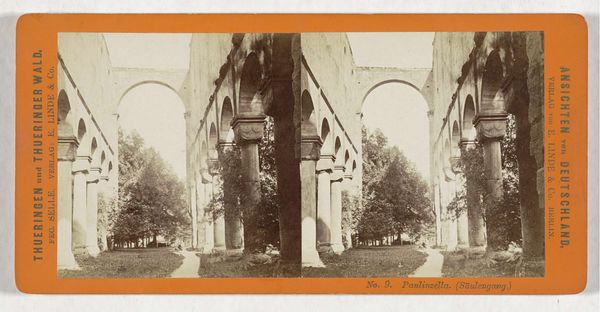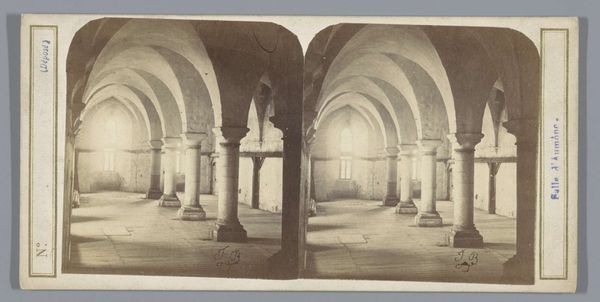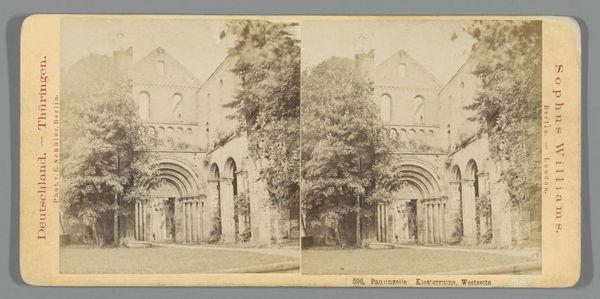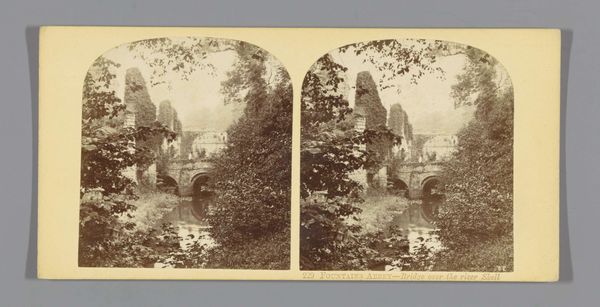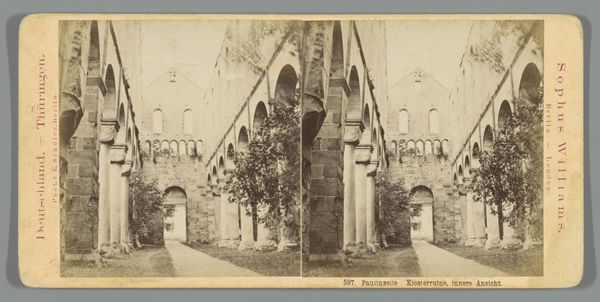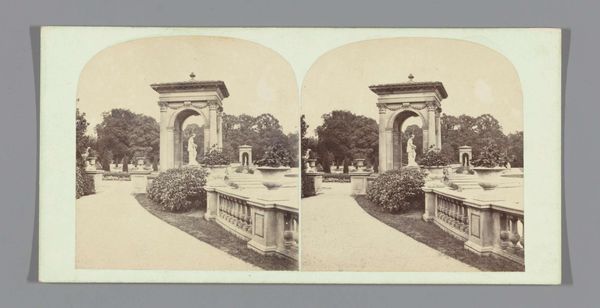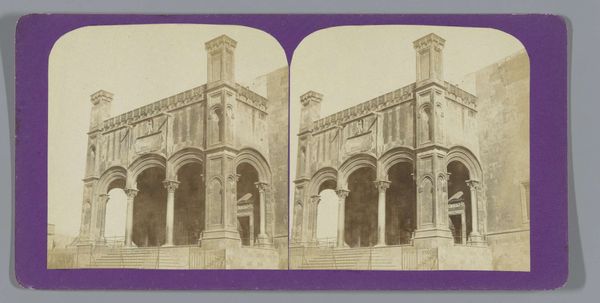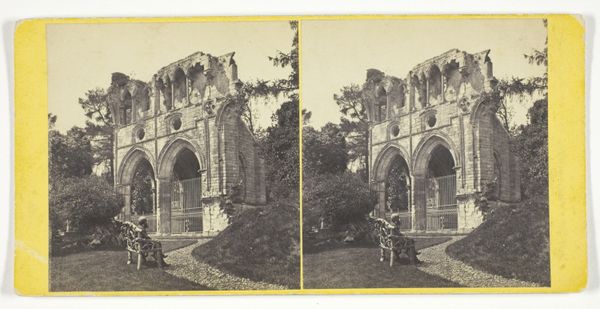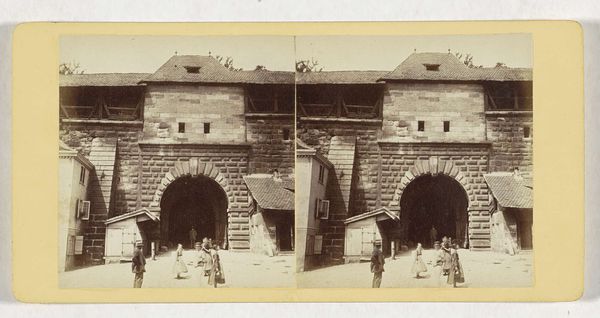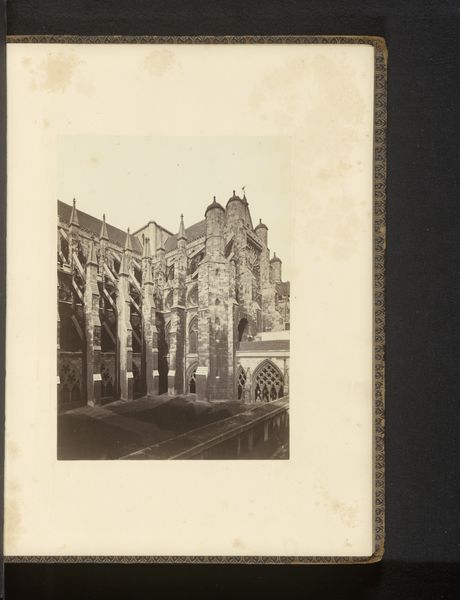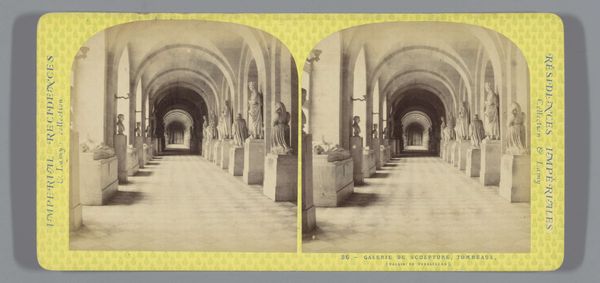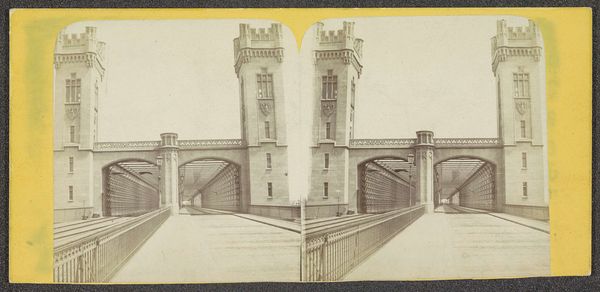
Dimensions: height 85 mm, width 170 mm
Copyright: Rijks Museum: Open Domain
Laurentius Herzog created this stereoscopic photograph of the Ruïne van het Klooster van Paulinzella, likely in the late 19th century. The image invites us to consider the cultural significance of ruins and the evolving relationship between religion, history, and national identity in Germany. Stereoscopic photography was popular at this time, offering a simulacrum of three-dimensionality that captivated viewers. This particular subject—a ruined monastery—resonates with Germany's complex past. Monasteries like Paulinzella were once central to the region’s cultural and political life, but were often suppressed during the Reformation and subsequent conflicts. The ruin becomes a site of memory, evoking both religious devotion and the ravages of history. The solitary figure in the photograph adds to this sense of contemplation. Is he a tourist, a scholar, or simply a wanderer reflecting on the past? The politics of imagery are central here; Herzog's photograph helped shape perceptions of German history, suggesting a narrative of loss, resilience, and the enduring power of the past. Understanding this photograph requires research into the history of Paulinzella Monastery and its place within German cultural memory.
Comments
No comments
Be the first to comment and join the conversation on the ultimate creative platform.

